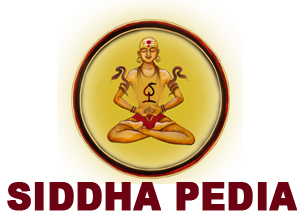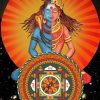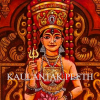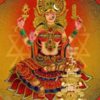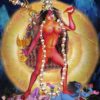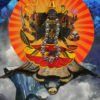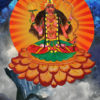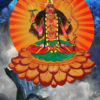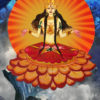Kulasrota
The Kulasrota, deriving its name from “kula” meaning tradition, is a tantric yogic tradition where “srota” signifies origin or source. It represents a place from which diverse traditions originate. Deeply rooted in the Himalayan Siddha tradition, Kulasrota is a yantra or ritual implement associated with Goddess Kurukulla. The design of Kulasrota features the “Kam beej”… read more »
